Upgrade & Secure Your Future with DevOps, SRE, DevSecOps, MLOps!
We spend hours on Instagram and YouTube and waste money on coffee and fast food, but won’t spend 30 minutes a day learning skills to boost our careers.
Master in DevOps, SRE, DevSecOps & MLOps!
Learn from Guru Rajesh Kumar and double your salary in just one year.
Description
Every firm in the IT industry has started pushing code faster than ever. This is raising the rates of exposure in our systems and products every day. It is only DevOps that makes it possible to do more with fewer efforts but we must integrate security into our process as soon as we can to avoid the liabilities.
DevSecOps Training Course & Certification By experts is specially meant to educate the method of integrating security into the practices and underlines the professional use of security discipline as the primary means of safeguard to the organization and customer.
This certification course covers specific topics that include how DevSecOps provides the business value and the ability it has to enable the business and support an organizational transformation with the final goal of increasing productivity, reducing risk, and optimizing cost in the organization.
After joining our “DevSecOps Training Course & Certification By experts ” program you will have a good understanding and hands-on knowledge of tools, techniques, technologies which are related to DevSecOps, and you would be able to implement the DevSecOps pipeline, culture for your project or product independently.
Key Highlights
- 72 Hrs. Instructor-Led Training
- 30 Hrs. Self-paced Videos
- 60 Hrs. Project & Exercises
- DevOpsSchool Completion certification
- Job Assistance
- Flexible Schedule
- Lifetime Free LMS Access
- Trainer Support
Sub Menu
Upcoming Batches | Eligibility | Skills Covered | Tools Covered | Curriculum & Course Details | Certification | Reviews | Projects | FAQs | Our Gallery
Upcoming batches
1St week of every month
Eligibility
- Fresher looking to become DevSecOps Certified engineers
- IT professionals
- Software testers
- System administrators
- Solution architects
- Security engineers
- App developers
- Integration specialists
Who is this program for?
This program is for mainly Security professionals like Cyber security engineers, cloud security, system administrators, Infosec professionals, etc.
Eligibility for this program
Thereares no such pre-requisites for eligibility of DevSecOps butknowingf security principles, programming languages (Ruby, Perl, Java, Python) and automation tools, having technical degrees such as engineering or computer science, having Knowledge of the DevOps culture and principles will be a great advantage to you.
Skills Covered
- SDLC Models & Architecture with Agile, DevOps, SRE & DevSecOps, SOA & Micro services – Concept
- Platform – Operating Systems – Centos/Ubuntu & VirtualBox & Vagrant
- Platform – Cloud – AWS
- Platform – Containers – Docker
- Planning and Designing – Jira & Confulence
- Source Code Versioning – Git using Github
- Code Analysis & Securing Code (SAST) – SonarQube & – OWASP SonarQube
- Webserver – Apache HTTP & Nginx
- Securing infra & compliance – Chef InSpec
- Container Orchestration – Kubernetes & Helm Introduction
- Infrastructure Coding – Terraform
- Network configurations and Service Discovery – Consul
- Securing credentials – HashiCorp Vault & SSL & Certificates
- Securuing Containers & Kubernetes (RASP) – Falco & Notary
- Infrastructure Monitoring Tool 1 – Datadog
- Log Monitoring Tool 1 – Splunk
- Log Monitoring Tool 2 ELK stake
- Performance & RUM Monitoring – NewRelic
- Emergency Response & Alerting & Chat & Notification – SMTP, SES, SNS,Pagerduty & Slack – Pagerduty & Slack
- Security Through Logs 1 – Splunk SIEM
- Security Through Logs 2 – Elasticsearch with Kibana Security
- Cloud Security service & Practices – Cloud Security with AWS service
Tools Covered
- Centos
- Ubuntu
- VirtualBox
- Vagrant
- AWS cloud
- Docker
- Jira
- Confluence
- Python
- Git
- Github
- SonarQube
- Maven
- Gradle
- Packer
- Artifactory
- Junit & selenium & Jacoco
- Ansible
- Apache HTTP & Nginx
- Terraform
- Kubernetes
- Helm
- Jenkins
- Envoy & Istio
- Consul
- Datadog
- Prometheus with Grafana
- Splunk
- NewRelic
- ELK stake
- Elasticsearch with Kibana Security
- Slack
- Falco & Notary
- HashiCorp Vault & SSL & Certificates
Curriculum & Course Details
- Software Development Models/
- Learn DevOps Concept and Process
- Learn DevSecOps Concept and Process
- Learn SRE Concept and Process
- Explore the background, approach, and best practices
- Learn how these principles improve software quality and efficiency
- Discover the major steps required to successfully implement
- DevOps/DevSecOps/SRE Transition to a Project
- Understanding the Continuous Integration, Deployment & Monitoring (CI/CD/CM)
- Implement DevOps/DevSecOps/SRE – Organization & Culture
SDLC Models & Architecture with Agile, DevOps, SRE & DevSecOps, SOA & Microservices – Concept
- Let’s Understand about Software Development Model
- Overview of Waterfall Development Model
- Challenges of Waterfall Development Model
- Overview of Agile Development Model
- Challenges of Agile Development Model
- Requirement of New Software Development Model
- Understanding an existing Pain and Waste in Current Software Development Model
- What is DevOps?
- Transition in the Software development model
- Waterfall -> Agile -> CI/CD -> DevOps -> DevSecOps
- Understand DevOps values and principles
- Culture and organizational considerations
- Communication and collaboration practices
- Improve your effectiveness and productivity
- DevOps Automation practices and technology considerations
- DevOps Adoption considerations in an enterprise environment
- Challenges, risks, and critical success factors
- What is DevSecOps?
- Let’s Understand DevSecOps Practices and Toolsets.
- What is SRE?
- Let’s Understand SRE Practices and Toolsets.
- List of Tools to become Full Stack Developer/QA/SRE/DevOps/DevSecOps
- Microservices Fundamentals
- Microservices Patterns
- Choreographing Services
- Presentation components
- Business Logic
- Database access logic
- Application Integration
- Modelling Microservices
- Integrating multiple Microservices
- Keeping it simple
- Avoiding Breaking Changes
- Choosing the right protocols
- Sync & Async
- Dealing with legacy systems
- Testing
- What and When to test
- Preparing for deployment
- Monitoring Microservice Performance
- Tools used for Microservices Demo using container
Platform – Operating Systems – Centos/Ubuntu & VirtualBox & Vagrant
Ubuntu
- Installing CentOS7 and Ubuntu
- Accessing Servers with SSH
- Working at the Command Line
- Reading Files
- Using the vi Text Editor
- Piping and Redirection
- Archiving Files
- Accessing Command Line Help
- Understanding File Permissions
- Accessing the Root Account
- Using Screen and Script
- Overview of Hypervisor
- Introduction of VirtualBox
- Install VirtualBox and created CentOS7 and Ubuntu VVMS
Vagrant
- Understanding Vagrant
- Basic Vagrant Workflow
- Advance Vagrant Workflow
- Working with Vagrant VMs
- The Vagrantfile
- Installing Nginx
- Provisioning
- Networking
- Sharing and Versioning Web Site Files
- Vagrant Share
- Vagrant Status
- Sharing and Versioning Nginx Config Files
- Configuring Synced Folders
Platform – Cloud – AWS
- Introduction of AWS
- Understanding AWS infrastructure
- Understanding AWS Free Tier
- IAM: Understanding IAM Concepts
- IAM: A Walkthrough IAM
- IAM: Demo & Lab
- Computing:EC2: Understanding EC2 Concepts
- Computing:EC2: A Walkthrough EC2
- Computing:EC2: Demo & Lab
- Storage:EBS: Understanding EBS Concepts
- Storage:EBS: A Walkthrough EBS
- Storage:EBS: Demo & Lab
- Storage:S3: Understanding S3 Concepts
- Storage:S3: A Walkthrough S3
- Storage:S3: Demo & Lab
- Storage:EFS: Understanding EFS Concepts
- Storage:EFS: A Walkthrough EFS
- Storage:EFS: Demo & Lab
- Database:RDS: Understanding RDS MySql Concepts
- Database:RDS: A Walkthrough RDS MySql
- Database:RDS: Demo & Lab
- ELB: Elastic Load Balancer Concepts
- ELB: Elastic Load Balancer Implementation
- ELB: Elastic Load Balancer: Demo & Lab
- Networking:VPC: Understanding VPC Concepts
- Networking:VPC: Understanding VPC components
- Networking:VPC: Demo & Lab
Platform – Containers – Docker
- What is Containerization?
- Why Containerization?
- How Docker is a good fit for Containerization?
- Hodoes w work works?
- Docker Architecture
- Docker Installations & Configurations
- Docker Components
- Docker Engine
- Docker Image
- Docker Containers
- Docker Registry
- Docker Basic Workflow
- Managing Docker Containers
- Creating our First Image
- UUnderstandingDocker Images
- Creating Images using Dockerfile
- Managing Docker Images
- Using Docker Hub registry
- Docker Networking
- Docker Volumes
- Deep-dive into Docker Images
- Deep-dive into DockerfileDeep-dive into Docker ContainerDeep-dive into Docker NetworkDeep-dive into Docker Volumes
- Deep-dive into Docker VoluDeep-divisive into Docker CPU and RAM allocation deep-dive into Docker Config
- Docker Compose Overview
- Install & Configure Compose
- Understanding Docker Compose Workflow
- Understanding Docker Compose Services
- Writing Docker Compose Yaml file
- Using Docker Compose Commands
- Docker Compose with Java Stake
- Docker Compose with Rails Stake
- Docker Compose with PHP Stake
- Docker Compose with Nodejs Stake
Planning and Designing – Jira Confluence.
a. Jira
- Overview of Jira
- Use cases of Jira
- Architecture of Jira
- Installation and Configuration of Jira in Linux
- Installation and Configuration of Jira in Windows
- Jira Terminologies
- Understanding Types of Jira Projects
- Working with Projects
- Working with Jira Issues
- Adding Project Components and Versions
- Use Subtasks to Better Manage and Structure Your Issues
- Link Issues to Other Resources
- Working in Agile project
- Working with Issues Types by Adding/Editing/Deleting
- Working with Custom Fields by Adding/Editing/Deleting
- Working with Screens by Adding/Editing/Deleting
- Searching and Filtering Issues
- Working with Workflow basic
- Introduction of Jira Plugins and Addons.
- Jira Integration with Github
b. Confluence
- Exploring Confluence benefits and resources
- Configuring Confluence
- Navigating the dashboard, spaces, and pages
- Creating users and groups
- Creating pages from templates and blueprints
- Importing, updating, and removing content
- Giving content feedback
- Watching pages, spaces, and blogs
- Managing tasks and notifications
- Backing up and restoring a site
- Admin tasks
- Add/Edit/Delete new users
- Adding group and setting permissions
- Managing user permissions
- Managing add-ons or plugins
- Customizing confluence site
- Installing Confluence
- Evaluation options for Confluence
- Supported platforms
- Installing Confluence on Windows
- Activating Confluence trial license
- Finalizing Confluence Installation
Source Code Versioning – Git using Github
- Introduction of Git
- Installing Git
- Configuring Git
- Git Concepts and Architecture
- How does work?
- The Git workflow
- Working with Files in Git
- Adding files
- Editing files
- Viewing changes with diff
- Viewing only staged changes
- Deleting files
- Moving and renaming files
- Making Changes to Files
- Undoing Changes
- Reset
- Revert
- Amending commits
- Ignoring Files
- Branching and Merging using Git
- Working with Conflict Resolution
- Comparing commits, branches, and workspace
- Working with Remote Git repo using GithubPush-Pull – Fetch using Github
- Tagging with Git
Code Analysis & Securing Code (SAST) – SonarQube & – OWASP SonarQube
- What is SonarQube?
- Benefits of SonarQube?
- Alternative of SonarQube
- Understanding Various License of SonarQube
- Architecture of SonarQube
- How SonarQube wowork
- Components of SonarQube
- SonarQube runtime requirements
- Installing and configuring SonarQube in Linux
- Basic Workflow in SonarQube using Command line
- Working with Issues in SonarQube
- Working with Rules in SonarQube
- Working with Quality Profiles in SonarQube
- Working with Quality Gates in SonarQube
- Deep Dive into SonarQube Dashboard
- Understanding Seven Axis of SonarQube Quality
- Workflow in SonarQube with Maven Project
- Workflow in SonarQube with Gradle Project
- OWASP Top 10 with SonarQube
Webserver – Apache HTTP & Nginx
- Apache HTTP
- Introduction to a web server
- Install Apache on CentOS 7.4
- Enable Apache to automatically start when system boot
- Configure the firewall service
- Where is Apache?
- Directory structure
- Apache directory structure
- Configuration file
- Create your first page
- Virtual hosts
- Setting up the virtual host – name based
- Setting up the virtual host port-based
- Using aliases and redirecting
- Configuring an alias for a URL
- Redirects
- Logging
- The error log
- The access log
- Custom log
- Log rotation
- Security
- Basic Security – Part 1
- Basic Security – Part 2
- Set up TLS/SSL for free
- Basic authentication
- Digest authentication
- Access Control
- .htaccess (Administrator Side)
- .htaccess (User Side)
- Install and Configure antivirus
- Mittailgatedos attacks – mod_evasive
- Apache Performance and Troubleshooting
- Apache Multi-Processing Modules (MPMs)
- Adjusting httpd.conf – Part 1
- Adjusting httpd.conf – Part 2
- Troubleshoot Apache (Analyze Access Log) – Part 1
- Troubleshoot Apache (Analyze Access Log) – Part 2
- Use Apachetop to mono monitor webserverfic
Nginx
- Overview
- Introduction
- About NGINX
- NGINX vs Apache
- Test your knowledge
- Installation
- Server Overview
- Installing with a Package Manager
- Building Nginx from Source & Adding Modules
- Adding an NGINX Service
- Nginx for Windows
- Test your knowledge
- Configuration
- Understanding Configuration Terms
- Creating a Virtual Host
- Location blocks
- Variables
- Rewrites & Redirects
- Try Files & Named Locations
- Logging
- Inheritance & Directive types
- PHP Processing
- Worker Processes
- Buffers & Timeouts
- Adding Dynamic Modules
- Test your knowledge
- Performance
- Headers & Expires
- Compressed Responses with gzip
- FastCGI Cache
- HTTP2
- Server Push
- Security
- HTTPS (SSL)
- Rate Limiting
- Basic Auth
- Hardening Nginx
- Test your knowledge
- Let’s Encrypt – SSL Certificates
Securing infra & compliance – Chef InSpec
- About InSpec
- Orchestration, Configuration Management, Validation to Deployment
- Automating Security Validation Using InSpec
- Processing InSpec Results
- Overview
- InSpec Profile Structure
- InSpec Controls Structure
- InSpec Results
- Failure
- Pass
- Multiple Controls
- Environment Setup
- Download and Install VirtualBox
- Download and Install Vagrant
- Clone or Download-Unzip This Course Repository
- Setup Environments
- Run Vagrant to install the Virtual Environment
- Setup network in VirtualBox
- Vagrant Credentials
- AWS Credentials
- Studying an InSpec profile
- Understanding the profile structure
- Understand a control’s structure
- Understand a described structure
- file
- it
- should
- be_directory
- Exploring the InSpec Shell
- Enter the shell
- Explore the file resource
- Explore the Nginx resource
- Write the InSpec controls
- Refactor the code to use Attributes
- Multiple Attribute Example
- Running baseline straight from Github/Chef Supermarket
- Viewing and Analyzing Results
- Syntax
- Supported Reporters
- Putting it all together
- Automation Tools
- Additional InSpec tricks
- RSpec Explicit Subject
- looping file structure
- Create ba asic profile
- Download STIG Requirements Here
- Example Control V-38437
- Getting Started on the RHEL6 baseline
- Completed RHEL6 Profile for Reference
- Cleanup Environments
Container Orchestration – Kubernetes & Helm Introduction
- Understanding the Need of Kubernetes
- Understanding Kubernetes Architecture
- Understanding Kubernetes Concepts
- Kubernetes and Microservices
- Understanding Kubernetes Masters artists Component
- Kube-Episerver
- etc
- kKubescheduler
- kube-controller-manager
- Understanding Kubernetes Nodes and its Component
- kubelet
- Kube-proxy
- Container Runtime
- Understanding Kubernetes Addons
- DNS
- Web UI (Dashboard)
- Container Resource Monitoring
- Cluster-level Logging
- Understand Kubernetes Terminology
- Kubernetes Pod Overview
- Kubernetes Replication Controller Overview
- Kubernetes Deployment Overview
- Kubernetes Service Overview
- Understanding Kubernetes running environment options
- Working with first Pods
- Working with first Replication Controller
- Working with the first Deployment
- Working with first Services
- Introducing Helm
- Basic working with Helm
Infrastructure Coding – Terraform
- Deploying Your First Terraform Configuration
- Introduction
- What’s the Scenario?
- Terraform Components
- Updating Your Configuration with More Resources
- Introduction
- Terraform State and Update
- What’s the Scenario?
- Data Type and Security Groups
- Configuring Resources After Creation
- Introduction
- What’s the Scenario?
- Terraform Provisioners
- Terraform Syntax
- Adding a New Provider to Your Configuration
- Introduction
- What’s the Scenario?
- Terraform Providers
- Terraform Functions
- Intro and Variable
- Resource Creation
- Deployment and Terraform Console
- Updated Deployment and Terraform Commands
Network configurations and Service Discovery – Consul
- Why Consul?
- Modern Ops Challenges
- An Explosion of Services
- First Class Service Discovery
- Distributed Failure Detection
- Reactive Configuration via Key/Value Store
- Multi Datacenter Aware
- Monitoring Nodes
- Nodes and Services
- What We Will Set Up
- Defining the consul-server Node
- Launching the consul-server Node
- Network Interfaces on consul-server
- Exercise Consul Is Easy to Install
- Installing Consul
- Running the Consul Dev Agent
- Running Consul Locally to Access the Web UI
- Interface Web UI
- Interface HTTP API
- Interface DNS
- Interface CLI RPC
- Client vs. Cluster Address Conventions
- Challenge Spin Up Web and LB nodes
- Defining Web and LB Nodes
- Running Web and LB NoAnsul
- Ansul Agent On Web and LB nodes
- Remote Command Execution Across Cluster
- Graceful Leave vs. Failure
- Service Discovery
- From Nodes to Services
- Registering a Web Service
- Service Definitions
- Health Checking the Web Service
- Launching NGINX
- Consul DNS for Randomized Internal Service Load Balancing
- HTTP API and Failing Services
- Exercise Register Load Balancer
- Maintenance Mode
- Registration Methods
- Dynamic LB Config with consul-template
- HAProxy
- Setup Script for HAProxy
- Static HAProxy Config
- Handling Failed Services
- HAProxy Config Template
- What Is Consul Template?
- Installing Consul Template
- Consul Template Dry Mode
- Dynamically Regenerate HAProxy Config
- Rolling Updates with Maintenance Mode
- Other Tools Like Consul Template
- Benefits Recap and What Next
- Reactive Configuration via Key/Value Store Why?
- Creating Keys and Folders in the Web UKey-Valueue CRUD via the CLI
- Exercise Get VK Data into HAProxy
- ReactiveReal-Time Configuration Files
- Revolutionizing Configuration Management
- Blocking Queries
- Tools to Investigate
- Health Checking
- Intro
- Terms Agent, Client, and Server Mode
- Gossip and Edge Triggered Updates
- Understanding Serf Health Status
- Node and Service Level Check Definitions
- Custom Node Level Health Checks of Disk, Memory, and CPU
- Self Healing Nodes
- Health Checking Is the Value at the Last Transition
- Health Check Recap
- Don’t Forget to Try This Out
- Consul Docs Overview
Securing credentials – HashiCorp Vault & SSL & Certificates
- Introduction
- Vault Concepts and Use Cases
- Vault Comparison
- Installing Vault
- Installing Vault Demo
- Starting a Dev Server
- Basic Secret Management
- Managing Secrets Demo
- Working with Secrets
- IntroductioKey-Valueue Secrets Engines
- Key-Value Secrets Lifecycle Demo
- Scenario and General Secrets Engines
- Working with Secrets EngineKey-Valueue Secrets Engine Demo
- Database Secrets Engine
- MySQL Secrets Engine Demo
- Dynamic Secrets
- Dynamic Secrets Demo
- Auditing Actions in Vault
- Audit Architecture and Device Types
- Vault Audit Commands
- Vault Audit Scenario
- Vault Enabling Auditing
- Vault Audit Log Review
- Vault Reviewing Audit Logs
- Operating Vault Server
- Overview
- Vault Server Architecture
- Storage Backend Options
- Installation Scenario
- Setting up the Consul Server
- Installing the Consul Agent
- Vault Server Configuration
- Installing Vault Server
- Server Operations
- Unseal and Initialize Vault Server
- Rotating and Updating Keys
- Managing Root Token
- Controlling Access in Vault
- Overview
- Authentication Methods
- Enabling the Userpass Method
- Logging in with Userpass
- Active Directory Authentication
- Vault Policies
- Creating Policies
- Configuring LDAP Authentication
- Client Tokens
- Response Wrapping
- Using Response Wrapping
- SSL & Certificates
- How SSL works
- Types of SSL
- Demo with OpenSSL
- How Certificates-based auth works!
Securing Containers & Kubernetes (RASP) – Falco & Notary
Falco
- Securuing Containers (RASP)- Twistkock
- Falco Components
- Userspace program
- Falco Configuration
- Privilege escalation using privileged containers
- Namespace changes using tools like signs
- Read/Writes to well-known directories such as /etc, /usr/bin, /Serbian
- Creating symlinks
- Ownership and Mode changes
- Unexpected network connections or socket mutations
- Securing Containers (RASP)- Falco
- Spawned processes using execve
- Falco drivers
- Falco userspace program
- Executing shell binaries such as sh, bash, csh, zsh, etc
- Executing SSH binaries such as ssh, SCP, sftp, etc
- Mutating Linux Coreutils executables
- Mutating login binaries
- Mutating shadow until or password executables
Notary
- What is CNCF Notary
- Why CNCF Notary?
- What is The Update Framework (TUF)?
- Understand the Notary service architecture
- A brief overview of TUF keys and roles
- Architecture and components
- Example client-server-signer interaction
- Threat model
- Notary server compromise
- Notary signer compromise
- Notary client keys and credentials compromise
- Run a Notary service
- Notary configuration files
Infrastructure Monitoring Tool 1 – Datadog
- Getting started
- Integrations
- Infrastructure
- Host Map
- Events
- Dashboards
- Datadog Tagging
- Assigning Tags
- Using Tags
- Agent
- Datadog Agent Usage
- Datadog Agent Docker
- Datadog Agent Kubernetes
- Datadog Agent Cluster Agent
- Datadog Agent Log Collection
- Datadog Agent Proxy
- Datadog Agent Versions
- Datadog Agent Troubleshooting
- Datadog Integrations
- Apache
- Tomcat
- AWS
- MySql
- Datadog Metrics
- Metrics Introduction
- Metrics Explorer
- Metrics Summary
- Datadog Graphing
- Dashboards
- Metrics
- Datadog Alerting
- Monitors
- Manage Monitors
- Monitor Status
Log Monitoring Tool 1 – Splunk
- What Is Splunk?
- Overview
- Machine Data
- Splunk Architecture
- Careers in Splunk
- Setting up the Splunk Environment
- Overview
- Splunk Licensing
- Getting Splunk
- Installing Splunk
- Adding Data to Splunk
- Basic Searching Techniques
- Adding More Data
- Search in Splunk
- Demo: Splunk Search
- Splunk Search Commands
- Splunk Processing Langauge
- Splunk Reports
- Reporting in Splunk
- Splunk Alerts
- Alerts in Splunk
- Enterprise Splunk Architecture
- Overview
- Forwarders
- Enterprise Splunk Architecture
- Installing Forwarders
- Installing Forwarders
- Troubleshooting Forwarder Installation
- Spelunking for DevOps and Security
- Splunk in DevOps
- DevOps Demo
- Splunk in Security
- Enterprise Use Cases
- Application Development in Splunkbase
- What Is Splunkbase?
- Navigating the Splunkbase
- Creating Apps for Splunk
- Benefits of Building in Splunkbase
Spelunking on Hadoop with Hunk
- What Is Hadoop?
- Running HDFS Commands
- What Is Hunk?
- Installing Hunk
- Moving Data from HDFS to Hunk
- Composing Advanced Searches
- Splunk Searching
- Introduction to Advanced Searching
- Eval and Fillnull Commands
- Other Splunk Command Usage
- Filter Those Results!
- The Search Job Inspector
- Creating Search Macros
- What Are Search Macros?
- Using Search Macros within Splunk
- Macro Command Options and Arguments
- Other Advanced Searching within Splunk
Log Monitoring Tool 2 ELK stake
- Introduction to Elasticsearch
- Overview of the Elastic Stack (ELK+)
- Elastic Stack
- Architecture of Elasticsearch
- Nodes & Clusters
- Indices & Documents
- A word on types
- Another word on types
- Sharding
- Replication
- Keeping replicas synchronized
- Searching for data
- Distributing documents across shards
- Installing Elasticsearch & Kibana
- Running Elasticsearch & Kibana in Elastic Cloud
- Installing Elasticsearch on Mac/Linux
- Using the MSI installer on Windows
- Installing Elasticsearch on Windows
- Configuring Elasticsearch
- Installing Kibana on Mac/Linux
- Installing Kibana on Windows
- Configuring Kibana
- Kibana now requires data to be available
- Introduction to Kibana and dev tools
- Managing Documents
- Creating an index
- Adding documents
- Retrieving documents by ID
- Replacing documents
- Updating documents
- Scripted updates
- Upserts
- Deleting documents
- Deleting indices
- Batch processing
- Importing test data with cURL
- Exploring the cluster
- Mapping
- Introduction to mapping
- Dynamic mapping
- Meta fields
- Field data types
- Adding mappings to existing indices
- Changing existing mappings
- Mapping parameters
- Adding multi-fields mappings
- Defining custom date formats
- Picking up new fields without dynamic mapping
- Analysis & Analyzers
- Introduction to the analysis process
- A closer look at analyzers
- Using the Analyze API
- Understanding the inverted index
- Analyzers
- Overview of character filters
- Overview of tokenizers
- Overview of token filters
- Overview of built-in analyzers
- Configuring built-in analyzers and token filters
- Creating custom analyzers
- Using analyzers in mappings
- Adding analyzers to existing indices
- A word on stop words
- Introduction to Searching
- Search methods
- Searching with the request URI
- Introducing the Query DSL
- Understanding query results
- Understanding relevance scores
- Debugging unexpected search results
- Query contexts
- Full-text queries vs term level queries
- Basics of searching
- Term Level Queries
- Introduction to term level queries
- Searching for a term
- Searching for multiple terms
- Retrieving documents based on IDs
- Matching documents with range values
- Working with relative dates (date math)
- Matching documents with non-null values
- Matching based on prefixes
- Searching with wildcards
- Searching with regular expressions
- Term Level Queries
- Full-Text Queries
- Introduction to full-text queries
- Flexible matching with the match query
- Matching phrases
- Searching multiple fields
- Full-Text Queries
- Adding Boolean Logic to Queries
- Introduction to compound queries
- Querying with boolean logic
- Debugging bool queries with named queries
- How the “match” query works
Performance & RUM Monitoring – NewRelic
- Introduction and Overview of NewRelic
- What is Application Performance Management?
- Understanding a need for APM
- Understanding transaction traces
- What is Application Performance?
- APM Benefits
- APM Selection Criteria
- Why NewRelic is best for APM?
- What is NewRelic APM?
- How does NewRelic APM work?
- NewRelic Architecture
- NewRelic Terminology
- Installing and Configuring NewRelic APM Agents for Application
- Register a Newrelic Trial account
- Installing a JAVA Agent to Monitor your Java Application
- Installing a PHP Agent to Monitor your PHP Application
- Installing New Relic Agent for .NET Framework Application
- Installing a Docker-based Agent to Monitor your Docker-based Application
- Understanding of NewRelic Configuration settings of newrelic.yml
- Understanding of NewRelic Agent Configuration settings
- Working with NewRelic Dashboard
- Understanding a transactions
- Understanding Apdex and Calculating and Setting Apdex Threshold
- Understanding Circuit break
- Understanding Throughput
- Newrelic default graphs
- Understanding and Configuring Service Maps
- Understanding and Configuring JVM
- Understanding Error Analytics
- Understanding Violations
- Understanding and Configuring Deployments
- Understanding and Configuring Thread Profiler
- Depp Dive into Transaction Traces
- Profiling with New Relic
- Creating and Managing Alerts
- Working with Incidents
- Sending NewRelic Alerts to Slack
- Assessing the quality of application deployments
- Monitoring using Newrelic
- View your application’s index
- APM Overview page
- New Relic APM data in Infrastructure
- Transactions page
- Databases and slow queries
- Viewing slow query details
- External services page
- Agent-specific UI
- Viewing the transaction map
- Deep Dive into Newrelic Advance
- Newrelic transaction alerts
- Configure and Troubleshoot and Cross-Application Traces
- NewRelic Service Level Agreements
- Troubleshooting NewRelic
- Understanding and Configuring NewRelic X-Ray Sessions
- Deep Dive into NewRelic Agent Configuration
- Adding Custom Data with the APM Agent
- Extending Newrelic using Plugins
- Finding and Fixing Application Performance Issues with New Relic APM
- Setting up database monitoring using Newrelic APM
- Setting up and Configuring Newrelic Alerts
- Working with NewRelic Performance Reports
- Availability report
- Background jobs analysis report
- Capacity analysis report
- Database analysis report
- Host usage report
- Scalability analysis report
- Web transactions analysis report
- Weekly performance report
- Emergency Response & Alerting & Chat & Notification – SMTP, SES, SNS,Pagerduty & Slack – Pagerduty & Slack
Security Through Logs 1 – Splunk SIEM
Module 1 Getting Started with ES
- Provide an overview of Splunk for Enterprise Security (ES)
- Identify the differences between traditional security threats and new adaptive threats
- Describe correlation searches, data models, and notable events
- Describe user roles in ES
- Log on to ES
Module 2 Security Monitoring and Incident Investigation
- Use the Security Posture dashboard to monitor the enterprise security status
- Use the Incident Review dashboard to investigate notable events
- Take ownership of an incident and move it through the investigation workflow
- Use adaptive response actions during incident investigation
- Create notable events
- Suppress notable events
Module 3 – Investigations
- Use ES investigation timelines to manage, visualize and coordinate incident investigations
- Use timelines and journals to document breach analysis and mitigation efforts
Module 4 – Forensic Investigation with ES
- investigate access domain events
- Investigate endpoint domain events
- Investigate network domain events
- Investigate identity domain events
- Module 5 – Risk and Network Analysis
- Understand and use Risk Analysis
- Use the Risk Analysis dashboard
- Manage risk scores for objects or users
Module 6 – Web Intelligence
- Use HTTP Category Analysis, HTTP User-Agent Analysis, New Domain Analysis, and Traffic Size Analysis to spot new threats
- Filter and highlight events
Module 7 – User Intelligence
- Evaluate the level of insider threat with the user activity and access anomaly dashboards
- Understand asset and identity concepts
- Use the Asset Investigator to analyze events
- Use the Identity Investigator to analyze events
- Use the session center for identity resolution (UBA integration)
Module 8 – Threat Intelligence
- Use the Threat Activity dashboard to analyze traffic to or from known malicious sites
- Inspect> the status of your threat intelligence content with the threat artifact dashboard
- Module 9 Protocol Intelligence
- Describe Stream events data is input into Splunk events
- Use ES predictive analytics to make forecasts and view trends
Module 10 – Glass Tables
- Build glass tables to display security status information
- Add glass table drill-down options
- Create new key indicators for metrics on glass tables
Security Through Logs 2 – Elasticsearch with Kibana Security
- SIEM Introduction
- SIEM Components
- Setup and Configure ELK
- Understanding types of Threats
- Introduction to threat hunting on an endpoint platform
- Hunt types
- Install Beats shippers
- Filebeat for forwarding and centralizing logs and files
- Auditbeat for collecting security events
- Winlogbeat for centralizing Windows event logs
- Packetbeat for analyzing network packets
- Data Source in ELK for Security Scanning
- Enable modules and configuration options
- Auditbeat & Discover Anomaly detection
- System module – Linux, macOS, Win
- packages
- processes
- logins
- sockets
- users and groups
- Audited module (Linux Kernel Audit info)
- File integrity module (FIM) – Linux, macOS, Win
- Filebeat & Discover Anomaly detection
- system logs (auth logs) – Linux
- Santa – macOS
- Winlogbeat & Discover Anomaly detection
- Windows event logs – Windows
- Packetbeat & Discover Anomaly detection
- Flows
- DNS
- other protocols
- Filebeat & Discover Anomaly detection
- Zeek NMS module
- Suricata IDS module
- Iptables/Ubiquiti module
- CoreDNS module
- Envoy proxy module (Kubernetes)
- Palo Alto Networks firewall module
- Cisco ASA firewall module
- Understanding SIEM UI
- Timelines
- Hosts
- Network
- Raw Event Data
- Threat Hunting with Kibana
- Introduction to the threat hunting and the Elastic Stack
- Network data
- Host data
- Data enrichment
- Threat hunting
- Guided Hunt
- Elastic Endpoint Security Triage and Response
- Triage and tune
- Alert management
- Detection and response
- Hunting malicious activity
- Advanced tradecraft analytics
Cloud Security service & Practices – Cloud Security with AWS service
- Identity & access management
- AWS Identity & Access Management (IAM)
- AWS Single Sign-On
- Amazon Cognito
- AWS Directory Service
- AWS Resource Access Manager
- AWS Organizations
- Detection
- AWS Security Hub
- Amazon GuardDuty
- Amazon Inspector
- AWS Config
- AWS CloudTrail
- AWS IoT Device Defender
- Infrastructure protection
- AWS Shield
- AWS Web Application Firewall (WAF)
- AWS Firewall Manager
Certification
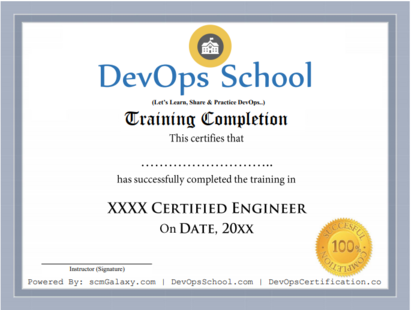
The certification is a vital part of any professional to have a strong skill and knowledge on any subject. It gives you an advantage in your career by providing the required knowledge and skills, it helps you in getting a good job in a respected IT company. Having certification from DevOpsSchool will enable you to get a chance to be trained by IT-recognized and experienced trainers who always feel happy to serve their knowledge to our participants. Our DevOpsSchool will provide you with a completion certificate after finishing your training, which will help you stand out from others with more confidence.
Reviews
These are some of the results of our hard work. By giving an excellent journey with 8000+ participants from different countries we have got marvelous reviews that help us stand out from other institutes. We bigheadedly can say we have helped so many professionals to build their careers. Le3t’s have a look at some of the reviews that we have got from our participants who are happy to be a part of DevOpsSchool.
Videos
Projects
In this entire training program, you will get a real-time-based project to work on, which will help you to gadget your learnings, and also it will increase your knowledge and skills. With the help of important tools and platforms, you will have a practical experience where we help you to envisage a real development environment, testing environment, and production environment.
FAQs
1. Will I get technical support after completion of training?
Yes, it’s free of cost for a lifetime. We will give you can access to our Google drive where you can drop your query and our trainers will respond to you back.
2. Why should I learn the DevSecOps course online instead of offline?
First, this is the best option to keep you and your instructor safe in this dangerous pandemic. As well as the environment and benefits that you will get in offline classes same we will provide you in online classes. We will make your experience much better and more comfortable than offline classes. That’s why we provide live and instructor-led online classes where you can interact with your instructor to clear your doubts.
3. How long will it take to complete this course?
As this course has vast course content and has lots of toolsets to cover that’s why it takes 3 to 4 months to fully complete the course. This training is conducted only on weekends i.e. Saturday and Sunday.
4. What are the pre-requisites to learn DevSecOps?
Well, there are no such pre-requisites but having a basic knowledge of coding and scripting, Linux would be great.
5. Can a non-technical person learn DevSecOps?
Yes, but it will be very hard to learn because here the technical words and platforms will be used that he will be not aware of so in my recommendation you shouldn’t try but if still if you want to then you should be very concentrated and honest with you as you have to work hard.
6. Do you have online classes or offline classes?
As of now online classes but he it is a group of people requirement then we can discuss offline classes.
7. Will I get the job after completing this course?
Yes, you will be fully capable to perform any task given to you by your domain senior or manager. As you will be a certified DevSecOps engineer who will have all the required skills and knowledge to perform any task.
8. Which kind of certification will DevOpsSchool provide?
It’s a completion certificate. It will show that you have completed the training and have the right skills and knowledge to perform the task assigned by your company.
9. How to start a DevSecOps career?
You can go for self-learning materials like Pdf, Slides, YouTube videos but there is one more option that is our DevSecOps program. Our DevSecOps certified program will teach you from basic to advanced. It helps you to start your career.
10. Who will be my trainer?
As we have so many trainers, it’s impossible to tell you quickly, as we have to go through their availability. But we can assure you you will get the best trainer as we have a group of best trainers who are very experienced and skillful trainers. They have 15+ iT working experience.
11. Can I get a demo session?
Instead of Demo class, we can provide you the Demo video of the previous session. By going through the Demo video, you can think of enrollment.
Our Gallery


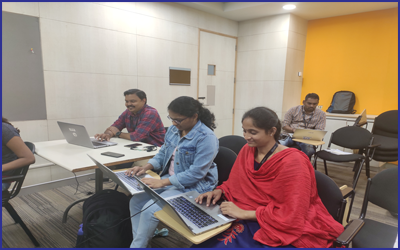
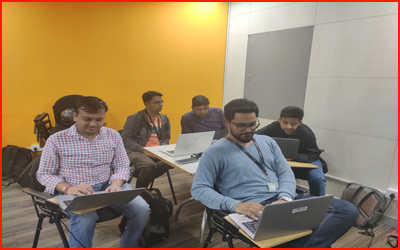
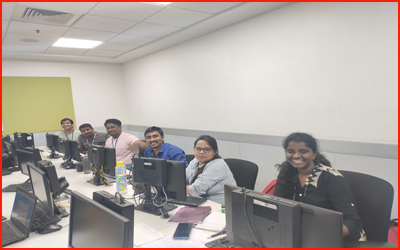
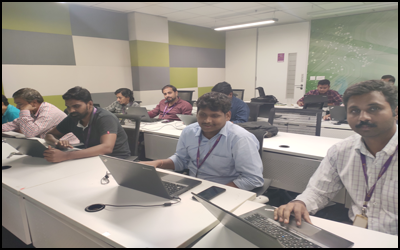
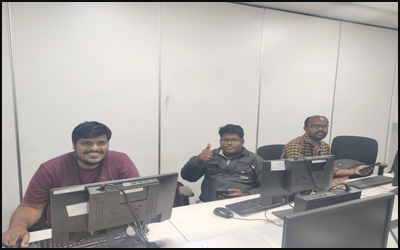
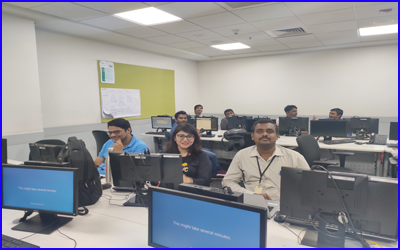

 Starting: 1st of Every Month
Starting: 1st of Every Month  +91 8409492687 |
+91 8409492687 |  Contact@DevOpsSchool.com
Contact@DevOpsSchool.com